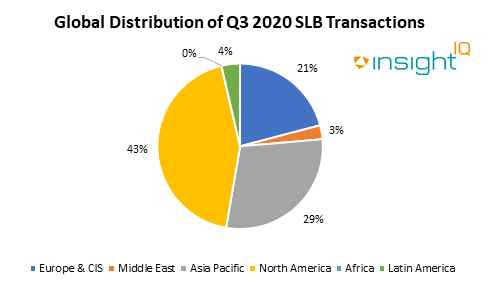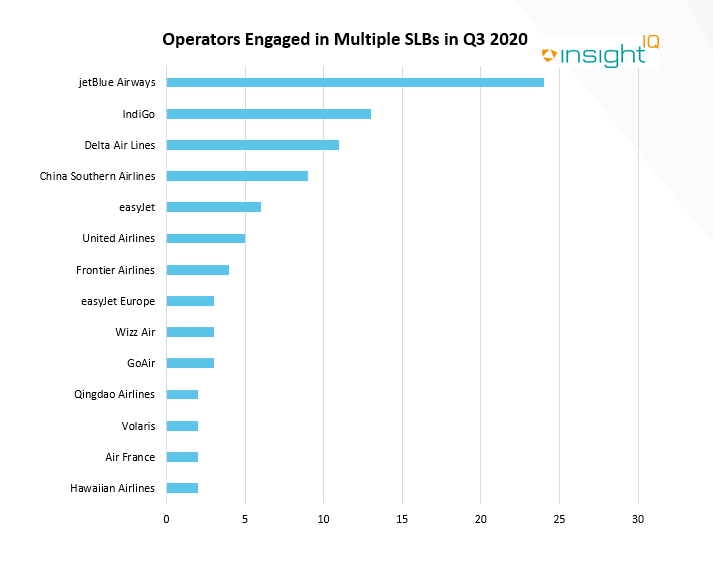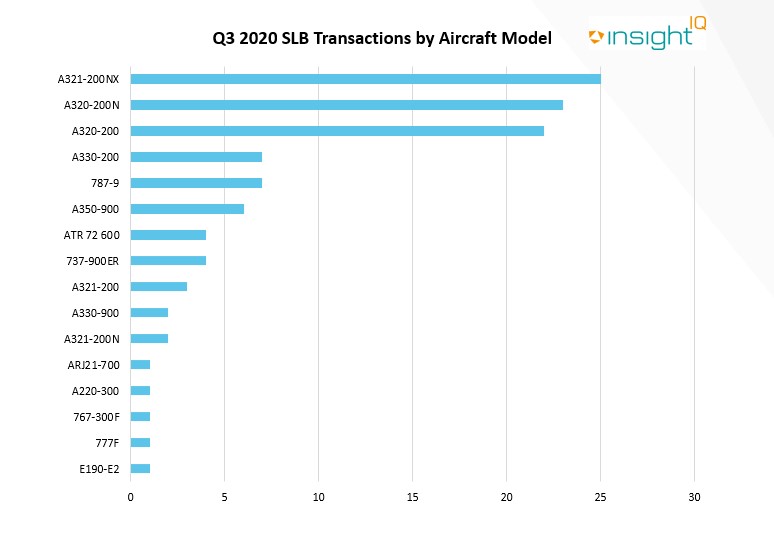20/11/2020
Since the outbreak of Covid-19, sale and leaseback (SLB) activity has shifted towards the stronger credit, higher tier carriers including larger low-cost carriers and flag carriers or major airlines.
In the following paragraphs, IBA summarises recent trends in the market based on the 110 transactions we've observed since July 2020.
Looking first at geography, we've witnessed a concentration of transactions in North America, recording deals involving 48 aircraft amongst seven airlines featuring low-cost carriers (LCCs) such as jetBlue and all three major US airlines: American, Delta and United.

Asia Pacific carriers have also been active in this market, accounting for 29% of SLB deals in the third quarter. Carriers involved have included strong Chinese credits such as Air China, China Southern, Sichuan and Shenzhen Airlines.
Europe and CIS have also seen a significant number of deals with LCCs, including easyJet and Wizz, raising capital through SLB transactions alongside legacy carriers Air France, British Airways and SAS.
The following chart shows airlines that have taken part in Q3 SLB transactions involving multiple assets by number of units.

The Middle East has been thinly represented in these totals with only two transactions and Africa does not appear. Carriers in the Middle East have been badly affected by Covid due to the centricity of long-haul East-West connecting traffic on their business and their use of widebody aircraft types.
Large widebodies and those with four engines, often the preserve of large Middle East carriers, appear to have been off the menu for SLB deals.
As the following chart illustrates, the aircraft types most involved in recent SLB transactions have been young, efficient, latest-technology narrowbodies and mid-sized widebodies of the same calibre.

When we consider the pricing of recent transactions, we typically see aircraft acquired in line with IBA's post-Covid current market value position for younger assets.
Some lessors are prepared to transact at a higher price with a higher lease rate but this has implications for Lease Rate Factors (LRFs) and most carriers seem to favour achieving lower ownership and operation costs rather than raising large sums at the front end.
The typical LRF range we've seen in recent deals is 0.55% - 0.75% for liquid narrowbody types and 0.75% - 0.85% for widebodies and niche or older generation narrowbodies.
It appears transactions that are happening focus on those buyers with access to immediate, low-cost funding, which explains some of the lower LRFs we've seen. The main lessor participants in the post-Covid SLB market have been the stronger lessors, often with bank backing. These include BOC Aviation, Bocomm and SMBC AC.
IBA expects operators to continue to seek financing through SLB transactions in the fourth quarter, particularly since the FAA's recent announcement of a green light for Boeing's 737 MAX to return to service.
IBA's InsightIQ analysis platform flexibly illustrates multiple asset, fleet and market positions, actual and potential, to inform client choices and identify acquisition opportunities. Immediate access to crucial aircraft, engine, lease rate and fleet data eases appreciation of historic and future aircraft concentrations and operator profiles.